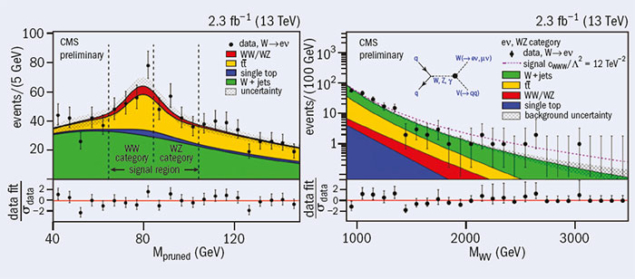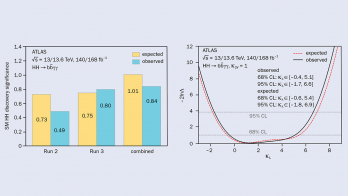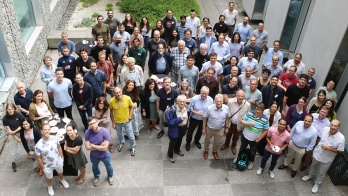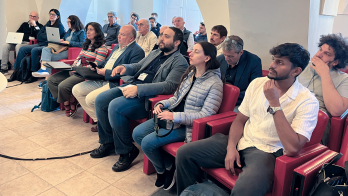It is quite improbable for two colliding protons to produce a W or Z electroweak gauge boson. Producing two or more W or Z bosons in the same collision is even less likely.

When such events do arise, however, the non-Abelian SU(2) nature of electroweak bosons – which are generally denoted V – allows the bosons to interact directly with each other. Of particular interest are the direct interactions of three electroweak gauge bosons, whose rate depends on the corresponding triple-gauge-boson-coupling (TGC) strength. Measurement of the rates of single V and double VV (diboson) production and of the strength of TGC interactions represent fundamental tests of the electroweak sector of the Standard Model (SM).
The inclusive production rates of single W or Z bosons at the LHC have been calculated in the SM to an accuracy of about 3%, while the ratio of the W-to-Z-boson production rate is predicted to even greater precision because certain uncertainties cancel. The CMS collaboration has recently measured the W and Z boson inclusive production rates and finds their ratio to be 10.46±0.17, in agreement with the SM prediction at the per cent level. CMS has also measured the ZZ, WZ and WW diboson production rates, finding agreement with the SM predictions within a precision of about 14, 12 and 9%, respectively. These results are based on leptonic-decay modes, specifically decays of a W boson to an electron or muon and the associated neutrino, and of a Z boson to an electron–positron pair or to a muon–antimuon pair.
Results obtained so far have established the viability of the techniques.
Leptonic decays provide an unambiguous experimental signature for a W or Z boson but suffer in statistical precision because of relatively small branching fractions. A complementary strategy is to use hadronic decay modes, namely decays of a W or Z boson to a quark–antiquark pair, which benefit from much larger branching fractions but are experimentally more challenging. Each quark or antiquark appears as a collimated stream of particles, or jet, in the detector. Thus the experimental signature for hadronic decays is the presence of two jets. Discriminating between the hadronic decay of a W boson with a mass of 81 GeV and that of a Z boson (91.2 GeV) is difficult on an event-by-event basis due to the finite jet-energy resolution. Nonetheless, the separation can be performed on a statistical basis for highly energetic jets (see figure).
CMS has selected WV diboson events in which a W boson decays leptonically and a highly energetic V boson decays hadronically. Because of the high V boson energy, the two jets from the V boson decay are partially merged and the WV system can have a very large mass. As a result, the analysis probes a regime where physics beyond the SM might be present. Searches are performed as a function of the mass of the WV system and are used to set limits on anomalous TGC interactions. Results obtained so far have established the viability of the techniques, but much greater sensitivity to the presence of anomalous TGC interactions is expected with the larger data samples that will be analysed in the future.








